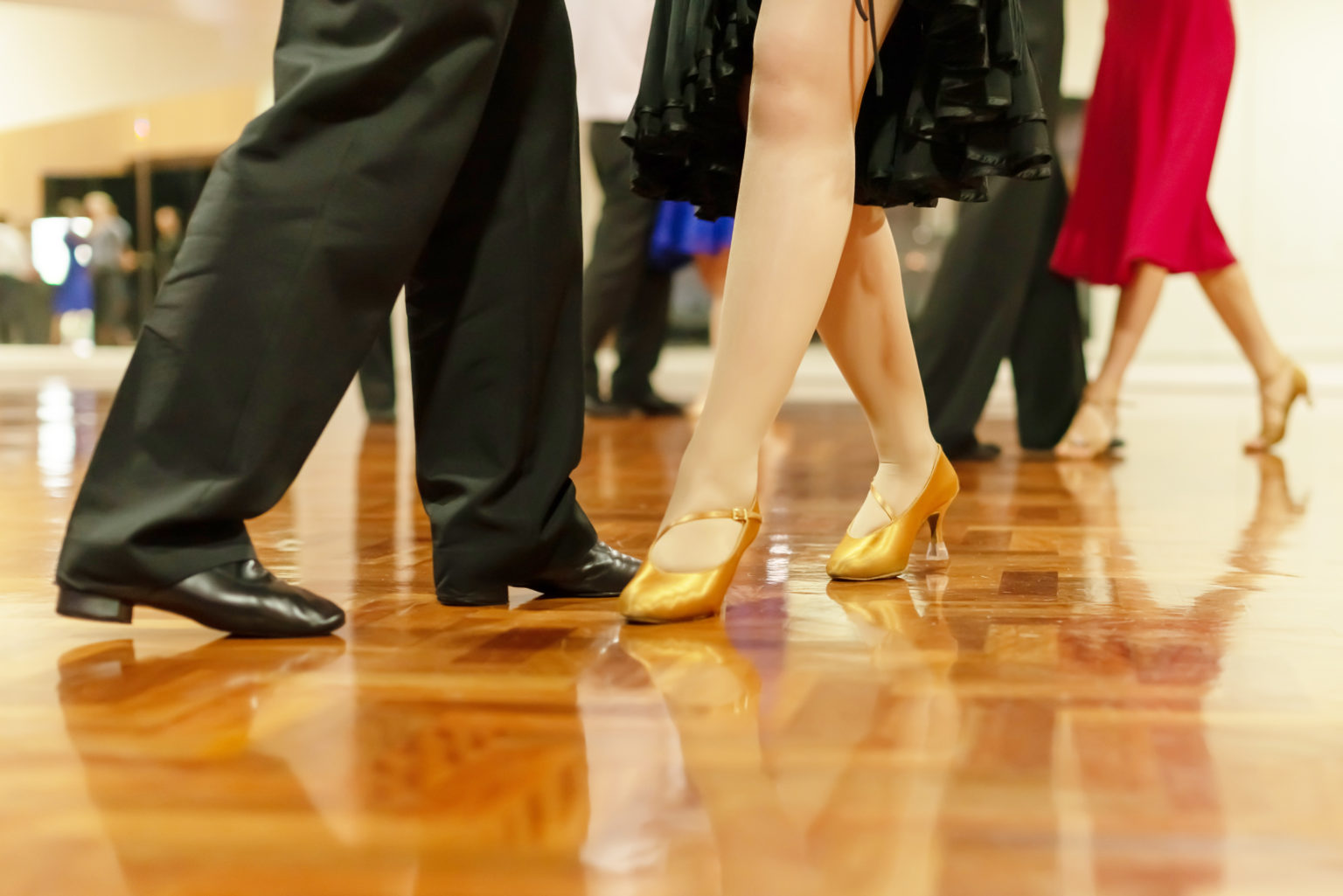
New Vogue Lock Steps
In this instalment, DK Ballroom Instructor Cassie Tucker discusses the Lock Step in New Vogue dances (& how they differ from Standard Ballroom)…
Figures in ballroom dancing are generally designed with a particular function in mind: some are designed for travel (Weave), some to change body position (Progressive Link), some are used for floor craft (Hover Corte) and others are purely designed to be fancy (Fleckerl). A good ballroom routine will use a combination of figure types to make the routine both functional and interesting.
Lock Steps in Standard Ballroom dances generally fall into the category of Travel, designed to get us from A to B relatively quickly. The footwork itself is designed to keep momentum flowing forward as we remain in an “up” state (on toes) during the lock. For example, in a Quickstep Forward Lock, we use the footwork Heel Toe (HT), Toe (T), Toe (T), Toe Heel (TH), and during a Backward Lock, we use Heel Toe (HT), Toe (T), Toe (T), Toe Heel (TH). The two Toe (T) steps in the middle indicate the point where the feet cross. As a result, the heels do not get lowered to the ground, thus we DO NOT lower during Ballroom lock steps.
The Lock Steps used in New Vogue dances such as Merrilyn, Carousel, Tracie-Leigh Waltz, and Excelsior Schottische are very different. Most notably, we DO lower during New Vogue lock steps. For example, in Merrilyn, the Forward Lock footwork is Heel Toe (HT), Toe Heel (TH), Heel Toe (HT), and the Backward Lock footwork is Toe (T), Toe Heel (TH), Toe Heel (TH). The point where the feet cross is briefly on two Toes, however, we must complete the lowering action onto a Heel before proceeding onto the next step.
Why do we lower during a New Vogue lock? Mostly, it’s for stability. Locks in New Vogue dances are often followed by a Throw to Aerial position, Change of Direction, or some other action that requires decreased momentum. New Vogue locks have a very similar feel to a wave rolling back on itself, with the energy travelling back against Line of Dance, down and forward in a “C” shape dissipating the energy. At completion of the lock action, you will feel like you are in a “down” state, grounded and strong.
In New Vogue, there are of course exceptions to the lock footwork. Parma Waltz for instance has lock steps that travel diagonally which are danced on toes, much like a Quickstep lock. The Heel Toe (HT), Toe Heel (TH) footwork, as a rule, will generally apply to lock steps that travel directly Forward or Backwards along Line of Dance.
Cassie

